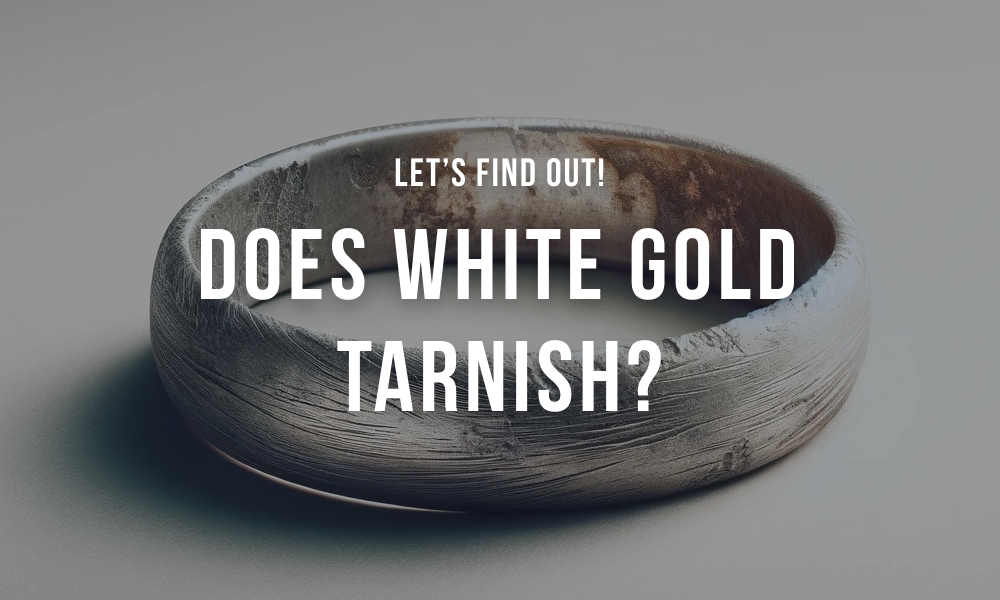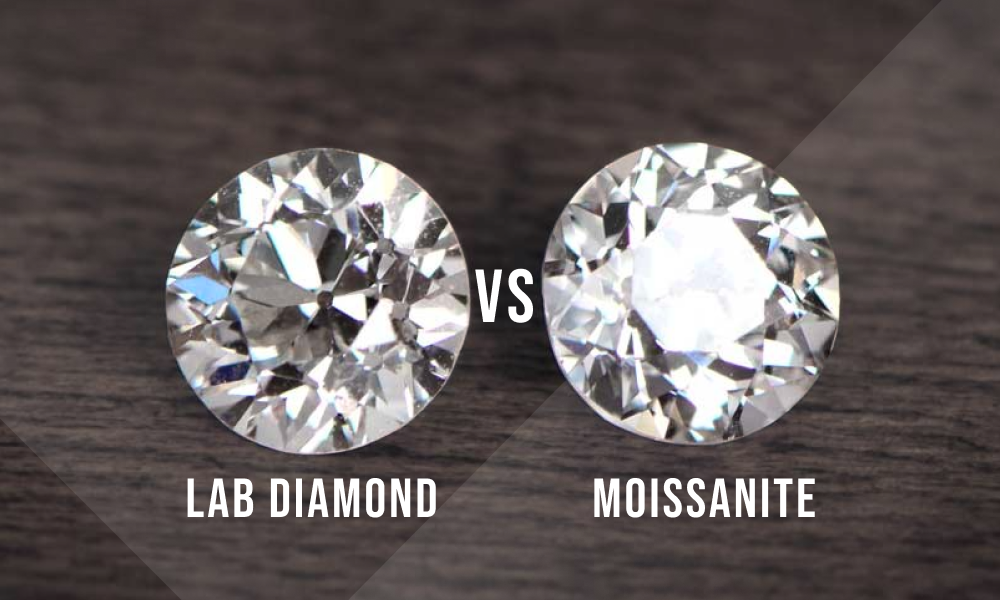White gold is a very popular choice for jewelry, especially engagement rings and wedding bands, because of its attractive shiny appearance that looks similar to platinum but is less expensive. White gold's popularity stems from its ability to maintain a bright, silvery white color and luster over time, unlike yellow gold which naturally tends to develop a patina.
However, many people wonder if white gold tarnishes over time and what causes it to lose its luster. Thankfully, there are ways to prevent white gold from tarnishing and to restore its original radiant appearance when it does start to lose its shine. In this article, we will answer these questions and provide some tips on how to prevent and restore the beauty of your white gold jewelry.
With care and maintenance, white gold jewelry retains its beautiful shine for years. Preventing scratches and chemical exposure helps maintain its brilliance, delaying the need for re-polishing. With proper care, white gold's elegance and brightness last a lifetime.
Does White Gold Tarnish?
The answer is yes, but not in the same way as pure gold. Pure gold is a very stable metal that does not react with oxygen or other substances, so it does not tarnish or corrode. However, pure gold is also very soft and malleable, which makes it unsuitable for jewelry. Learn more about the gold purity here!
Therefore, gold is mixed with other metals, such as silver, copper, nickel, or palladium, to form an alloy that is stronger and more durable. This alloy is called white gold, and its color depends on the proportion and type of metals used.
The gold content in white gold does not tarnish, but the other metals in the alloy can. These metals can react with moisture, chemicals, sweat, pollution, and other factors, and form a thin layer of oxide or sulfide on the surface of the jewelry. This layer can make the white gold look dull, discolored, or even yellowish.
Why Does White Gold Tarnish?

Several factors can cause white gold to tarnish, such as:
Humidity and moisture
Humidity and moisture can cause the metals in white gold to oxidize, especially if the jewelry is not dried properly after exposure to water. This can result in a dark or black tarnish on the white gold.
Exposure to chemicals
Chemicals such as chlorine, bleach, ammonia, perfume, hairspray, and cosmetics can damage the white gold and cause it to tarnish. These chemicals can also strip away the protective coating often applied to white gold jewelry, making it more vulnerable to tarnishing.
Sweat
Sweat contains salt, acids, and other substances that can corrode the metals in white gold. Sweat can also react with the skin and create a green or black stain on the jewelry and the wearer.
Pollution
Pollution in the air, such as sulfur dioxide, can cause the metals in white gold to sulfide, which can make the white gold look yellow or brown.
Lack of maintenance
White gold jewelry needs regular cleaning and polishing to remove dirt, dust, and oils that can accumulate on the surface and cause tarnishing. Neglecting to care for your white gold jewelry can make it lose its shine and sparkle.
Low-quality coating
Most white gold jewelry is coated with a thin layer of rhodium, a rare and expensive metal that gives white gold its bright and white color. However, some white gold jewelry may have a low-quality or thin coating of rhodium, which can wear off over time and expose the underlying metals. This can make the white gold look dull or yellow.
What Type of White Gold Is More Prone to Get Tarnished?
The type of white gold that is more prone to get tarnished depends on the karat and the coating of the jewelry. Karat refers to the percentage of gold in the alloy, and the higher the karat, the more the amount of gold.
White gold with higher karat gold content is less likely to tarnish because it has fewer metals that can react with external factors. For example, white gold with 18k gold (75% gold and 25% other metals) will be less likely to tarnish than white gold with 10k gold (41.7% gold and 58.3% other metals).
The coating of white gold also affects its tendency to tarnish. White gold without rhodium plating can tarnish faster because it has no protection from the elements. White gold with rhodium plating can last longer, but it can still tarnish if the coating wears off or gets scratched.
How to Prevent White Gold from Getting Tarnished
There are some steps you can take to prevent your white gold jewelry from getting tarnished, such as:
Proper storage
Store your white gold jewelry in a dry and cool place, away from sunlight and heat. Avoid keeping your white gold jewelry in humid or damp areas, such as bathrooms or basements. Use a soft cloth or a jewelry box to wrap your white gold jewelry and prevent it from rubbing against other metals or objects that can scratch or damage it.
Regular cleaning

Clean your white gold jewelry regularly with a mild soap and warm water, or a jewelry cleaner designed for white gold. Use a soft brush or a cotton swab to remove any dirt or residue from the jewelry gently. Rinse the jewelry well and dry it thoroughly with a soft cloth or a hair dryer. Avoid using abrasive or harsh cleaners, such as toothpaste or baking soda, that can scratch or erode the white gold.
Re-coating from time to time
Re-coat your white gold jewelry with rhodium every few years or when you notice signs of tarnishing or yellowing. You can take your white gold jewelry to a professional jeweler who can re-plate it with rhodium and restore its original color and shine. Re-coating your white gold jewelry can also make it more durable and resistant to tarnishing.
Conclusion
In summary, white gold is a gorgeous and adaptable metal often used in jewelry for its bright white luster. However, it can become susceptible to tarnishing over time when exposed to moisture, chemicals, body oils, and other contaminants.
The rhodium plating on white gold also naturally wears away revealing the yellowish tones of the underlying metals. To keep your beloved white gold jewelry looking its absolute best, be sure to store it safely when not being worn, routinely clean it with mild soap and water, and have it professionally polished and re-rhodium plated periodically as needed.
With proper care and maintenance, that cherished white gold engagement ring, wedding band, or heirloom piece can maintain its exquisite silvery sheen and continue sparkling brilliantly for a lifetime.
Investing a little time and effort into caring for your white gold allows you to fully cherish its precious beauty forever.
Frequently Asked Questions
How often should I get my white gold jewelry re-plated?
There is no definitive answer to how often you should get your white gold jewelry re-plated, as it depends on how often you wear it, how well you care for it, and how thick the original coating is. Generally, you can expect to re-plate your white gold jewelry every one to three years, or whenever you notice signs of tarnishing or yellowing.
Can white gold turn yellow over time?
Yes, white gold can turn yellow over time if the rhodium plating wears off and exposes the underlying metals. White gold is not naturally white, but rather a pale yellow or gray color, depending on the metals used in the alloy. The rhodium plating gives white gold its bright and white color, but it can wear off due to friction, abrasion, or exposure to chemicals. When this happens, the white gold can look yellow or dull. To prevent this, you should re-plate your white gold jewelry with rhodium periodically.



































































